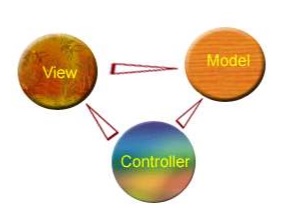 Online: 8799
Online: 8799
ASP.NET MVC > Basics
ASP.NET MVC > Basics
ASP.NET MVC stands for ASP.NET Model View Controller design pattern. MVC was first invented by Trygve Reenskaug and was named as “Thing Model View Editor” pattern originally. Slowly it became popular and renamed as “Model View Controller”.
ASP.NET MVC was created by Scott Guthrie of Microsoft in 2007 based on the MVC framework implemented in different framework like Ruby on Rails, Spring etc. ASP.NET MVC (Model View Controller) is an architectural design pattern that separates an application into three main components
- Model
- View and
- Controller
ASP.NET MVC is not the replacement of traditional ASP.NET Web form but it’s an alternative. The ASP.NET MVC App is highly testable application than traditional ASP.NET Web form applications. The namespace used for ASP.NET MVC is System.Web.Mvc.

Model
Model can generally be called as a logic layer cum data access layer that can contain the business logic or data access logic. It encapsulates the logic for the application domain.
View
Views can be called as Presentation layer that displays the application data in the browser.
Controller
Controllers are the place where the user interactions are handled. Controller is responsible to receive the request, process the response by sending to the Model and give the response to the View again.
So in MVC, the View is only responsible to display the information. Controller is responsible for receiving request, processing it using Model and sending it back to View and Model is responsible to apply logic, connect to the database and retrieve data.











